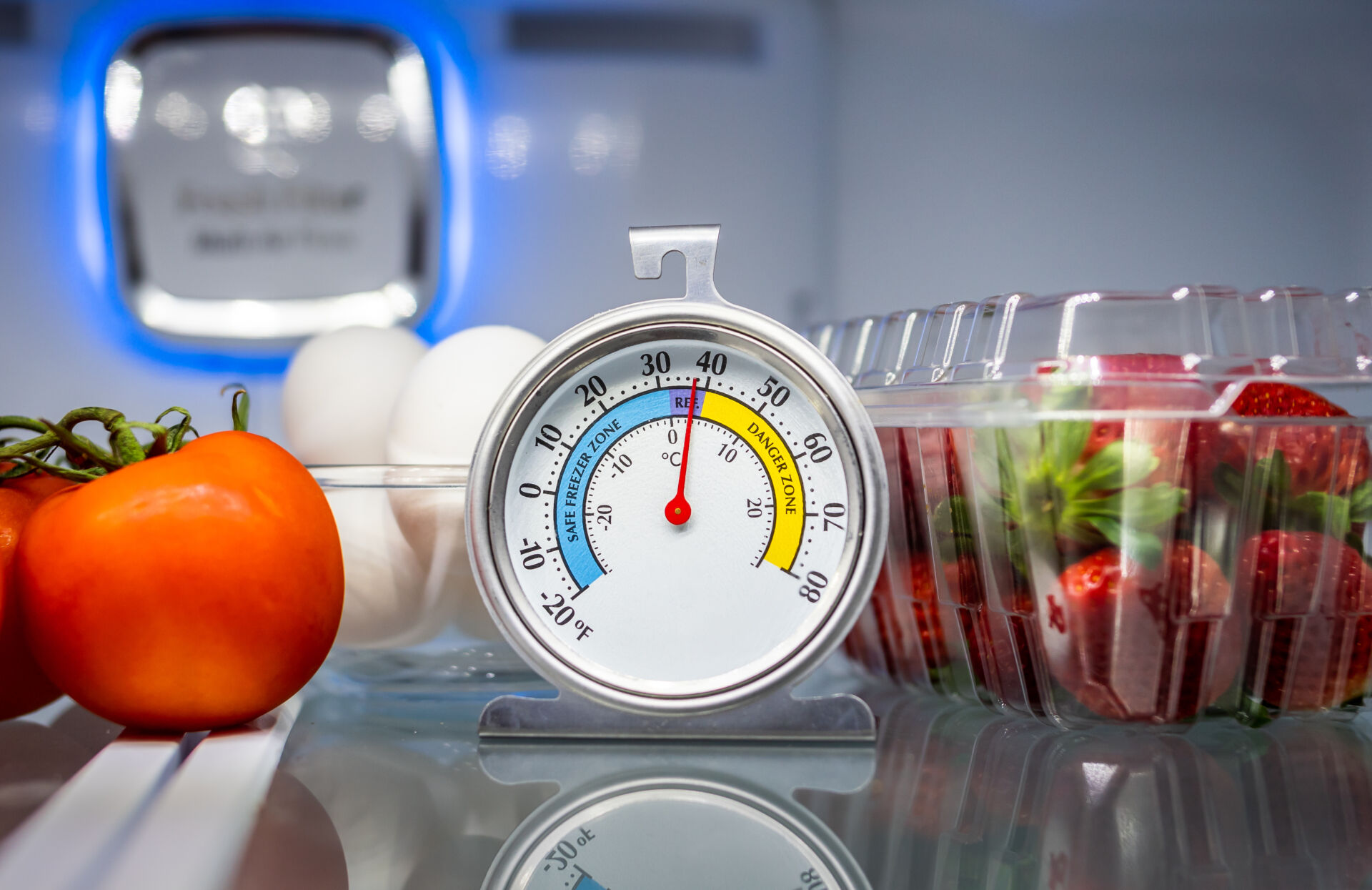Cool fridge temperatures help ensure everyday food items like milk and meat maintain their shelf life and stay safe to eat. But setting a fridge’s temperature close to freezing may begin to produce frost on refrigerated food. Correct fridge and freezer temperatures not only maintain food longevity, but also keep them safe from harmful bacteria. Knowing the correct temperature is especially important in a climate as hot as the one in Australia.
Temperatures may vary depending on the type of food and produce kept in the fridge. It would be wise to check storage directions on product labels because each section of the fridge can differ in temperature.
What’s the best fridge and freezer temperature?
According to the CSIRO, you should always keep the fridge temperature below 5°C and the freezer temperature below -18°C. To maintain food safety standards, the CSIRO recommends the following temperature guide:
- The ideal temperature setting for the fridge is 3°C
- The ideal temperature setting for freezers is -18°C to -20°C.
As previously mentioned, setting your fridge and freezer to the right temperature can help eliminate the risk of bacteria in your food.
Freezing is one of the most effective ways to prevent the spread of bacteria in your food. While freezing does not kill most bacteria, it does stop it from growing. The benefits of freezing food occurs because the water content of the food freezes, preventing bacteria growth and food spoilage. When thawing frozen food, the item should be stored in the fridge at no more than 5°C until it’s ready to be prepared.
Keep in mind that freezing food does not eliminate bacteria so when food thaws, bacteria will begin to grow again. It is important to avoid refreezing foods because it is more likely to have a higher bacteria count when frozen again. A fridge or freezer that is overfilled or unable to close properly (due to weak seal or poorly maintained freezer) can also increase the risk of food spoilage.
Grey or brown leathery spots found on frozen food are freezer burns. These occur when the food is not sealed properly, causing dry spots on the food. Freezer burns can also be caused by the freezer’s temperature being too cold.
Where should fruits and vegetables be stored in the fridge?
A refrigerator comes with several compartments, each offering a different temperature range.
- Fridge door: warmest section
- Top shelf: slightly warmer section
- Middle shelf: colder section
- Bottom shelf: coldest section
- Crisper: maintains humidity.
Fridge door
When the fridge door is opened, the cold air immediately escapes, making it the warmest part of the fridge. Products stored in the fridge door can regularly warm up to 15°C, so it is recommended to avoid putting easily spoiled food items in the door. The top compartment of the door is usually the best place to store butter and soft cheese so they can be at a ready-to-serve temperature once removed from the refrigerator.
Top shelf
The second warmest place in the fridge is the top shelf. This area is great for ready-to-eat foods, such as:
- Dairy products
- Yoghurts and cream
- Ready-made meals and packed foods.
Middle shelf
The middle shelf is colder than the top shelf. There is less temperature fluctuation in this area and it provides well-circulated air.
The middle shelf can be used for:
- Leftovers
- Cooked meats
- Salads.
Bottom shelf
This is the coldest section of the fridge. To prevent food from spoiling, place securely sealed food on the bottom shelf. This will prevent food leakage and cross-contamination.
The bottom shelf is perfect for foods such as:
- Raw meats
- Poultry
- Seafood.
Fridge crisper
The crispers – or humidity drawers – will usually be slightly warmer so that the fruits and vegetables don’t freeze. This section can be adjusted from low to high humidity, which opens or closes a window in the drawers. Greens including spinach, broccoli and herbs require high-humidity levels as these products are sensitive to moisture loss. Fruits including apples, mangoes, pears and avocados are prone to rotting at a faster rate than other fruits and thus require a lower humidity level.
How long can food be left out of the fridge?
When placing produce in the fridge, keep in mind the following items that are often classified as ‘high-risk foods’:
- Meat
- Poultry
- Dairy
- Seafood
- Eggs
- Cooked rice
- Cooked pasta.
Included among these are ready-made meals that contain ‘high-risk foods’. For example: pizza, pasta salads, casseroles, quiches, sandwiches and cakes. The CSIRO says storing these ‘high-risk foods’ at 5°C or below stops them from entering the ‘danger zone’ – temperatures between 5°C and 60°C. This temperature range gives bacteria an ideal breeding environment, allowing it to grow and multiply to numbers that cause food poisoning.
All perishables should be placed in the fridge or freezer as soon as possible after purchasing, while fresh produce should not be left at room temperature for any longer than two hours. Any longer than this time frame, food can spoil and cause illness.
10 ways to tell if food has spoiled
Food can spoil for different reasons, such as fridge or freezer temperature fluctuations, storage at an incorrect temperature, weak or damaged packaging as well as bugs or rodents. Symptoms of food poisoning include nausea, stomach cramps, vomiting, diarrhoea, fever and more.
Speak to a doctor for more information.
Some common signs of food spoilage are:
- Discolouration
- Change in texture
- Bad smell
- Unpleasant taste
- Mould or yeast
- Leakage
- Slimy film
- Swollen or dented can
- Can sprays or hisses once opened
- Food is past its use-by date.
If in doubt, throw it out.
The bottom line on fridge and freezer temperatures
A fridge or freezer running at an incorrect temperature means higher electrical bills, as well as spoiled food and potential health risks. A way to avoid this is by regularly checking the temperature with a thermometer and defrosting the fridge and freezer when possible.
Other helpful tips include:
- Avoid keeping the fridge door open unnecessarily
- Cover liquids stored in the fridge because these items release moisture, causing the compressor to work harder
- Store a thermometer on top shelves of both the fridge and freezer to give a general indication of the fridge temperature
- Regularly check fridge and freezer temperatures and adjust the thermostat when required
- Defrost fridge and freezer regularly to avoid frost build-up, which decreases energy efficiency. Although many refrigerators now come with a frost-free feature, which will automatically defrost your fridge for you.
If you’re in the market for a new fridge, why not check out our online ratings and see what refrigerator brands are keeping Aussie consumers happy?
Image credit: The Toidi/Shutterstock.com




Share this article